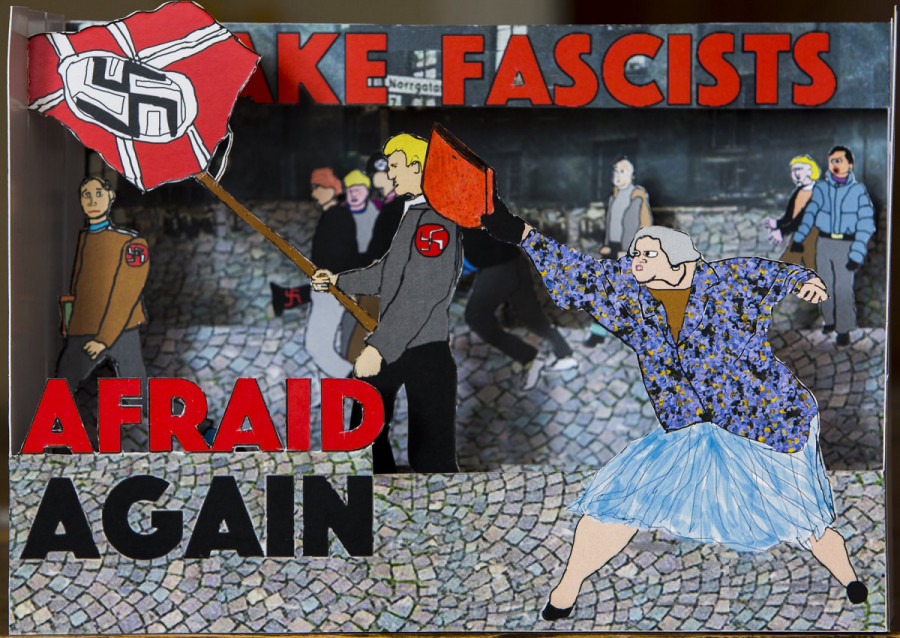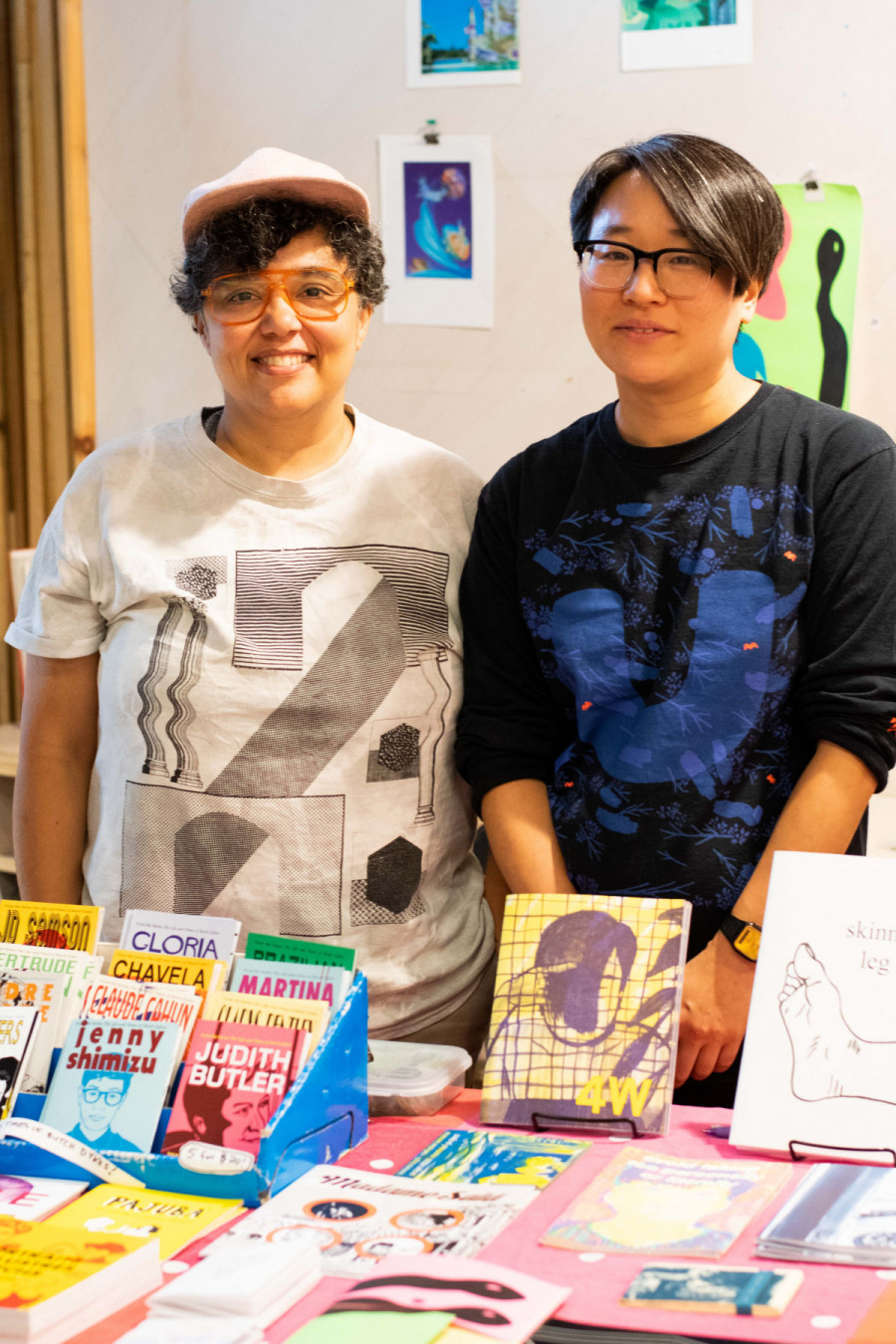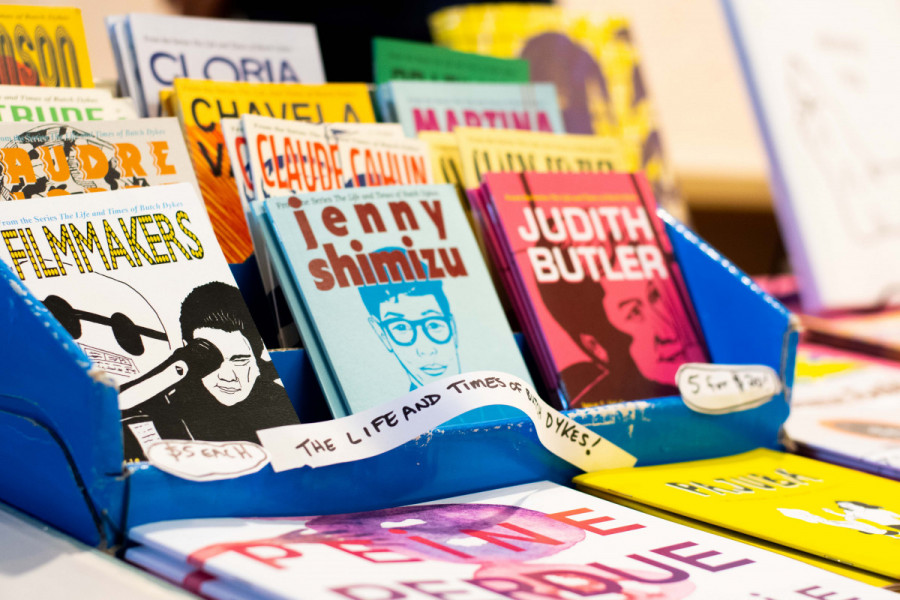Concordia Alumni Bring First Edition of Papier Marché to St. Denis. St.
Over 40 Artists Delight With Their Zines, Comics, Prints
Papier Marché, a new literary and visual art print market centered around independent artists had its first edition on Sept. 7 and 8. The market gathered over 40 writers and visual artists selling affordable and diverse prints, zines, comic books, and posters in what used to ironically be an Urban Outfitters on St. Denis St.
After graduating in communication studies and studio arts from Concordia, Alex Mondry started Flohmarkt Pop Ups, organizing primarily vintage flea markets. That’s where she met artist, illustrator, and Concordia alumna Maryanna Hardy, who sold vintage clothing. Together they started Papier Marché.
Freda Guttman spent a lifetime teaching arts in Montreal, first at Verdun High and then at Dawson College and Concordia. Now retired from her teaching career, she remains active as an artist and activist.
Her 2014 zine every child is an artist illustrates her past career. In it she compiled the work of her students at Verdun High School. It was work that she valued, but that her students didn’t want to take home with them, so she kept it for 50 years and ultimately revived it thought her art.
“They did really beautiful work. It sort of reinforces what I feel strongly about that everybody is an artist,” said Guttman.

On her table at Papier Marché was a mix of prints, collages, and pop-ups marked by her life as an activist and the causes that are close to her art—with feminist prints she made in the 1970s or a series of drawings about the genocide of Maya civilians in Guatemala during the 1980s.
“I don’t separate my activism from my art, my art is part of my practice as an activist,” said Guttman.
Her more recent work takes the form of pop-ups: three dimensional scenes that she uses to revive important political moments, such as her piece The Angry Woman, inspired by A Woman Hitting a Neo-Nazi With Her Handbag immortalized in an 1985 photograph by Hans Runesson.
Perhaps closer to Guttman’s past as a teacher is a series of prints of columns she wrote as a member of Projet d’organisation populaire, d’information et de regroupement – Comité Logement, a housing committee fighting against gentrification in the southwest of Montreal.
She has a column in their community newspaper called People’s History of Montreal where she explores the sometimes lesser known stories about the early days of the city and its past rooted in activism.
Guttman feels right at home in art fairs like Papier Marché where she gets to connect with her audience.
“I used to have shows in galleries and get reviews, and one day I decided I didn’t want to be in that kind of art world and I’d rather place my art in activist communities,” said Guttman.
B&D Press
Taking a more active part in the artistic community of the city is what led Jenny Lin and Eloisa Aquino to found B&D Press. The two graphic artists had a background making zines and have published their work centering queer voices and artists through their micro press since 2009.
Among the work they’ve published and were selling at Papier Marché was The Life and Times of Butch Dykes, a series of 12 zines by Aquino where she portrays the queer figures who marked her life and inspire her art such as Judith Butler or Gertrude Stein.
“One of the most interesting things about running a micro press, being self-published, is the direct contact with the public with art that is also accessible,” said Aquino.

“It’s really unpredictable sometimes, we make our stuff because we like it but we never know if anyone will connect to it or want it,” said Lin.
Over the years they have participated in many art fairs including ones that take a more direct political stance such as Queer Between the Covers.
“It feels like we’re participating in the community because everyone comes, we see other artists and other publishers and it feels really good to be there and a part of that,” said Aquino.
These art markets and fairs are also important for their visibility within the local scene and the opportunities they can lead to. “Our zines bridge into artist-run spaces where we can give workshops or talk about our art,” said Lin.
“The scene hasn’t really changed in the last 10 years, it’s always been very vibrant in Montreal,” said Aquino. She described the zine making scene as very fluid and ever changing due to the art form’s relative accessibility and affordability.
“People talk about the resurgence of zine culture but I don’t think it’s really that, zines are becoming more accepted in places like museums and libraries, accepted as a genuine and valid form of art,” said Aquino.


_600_832_s.png)
